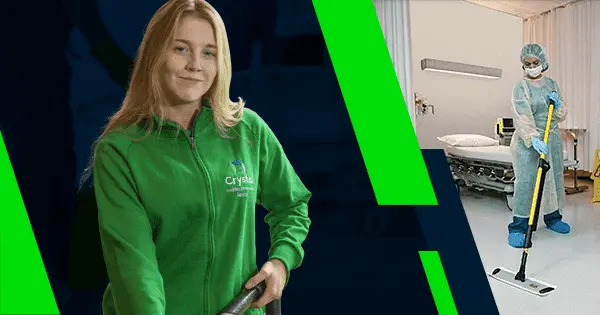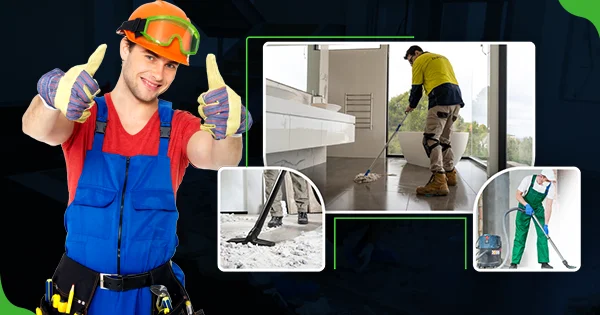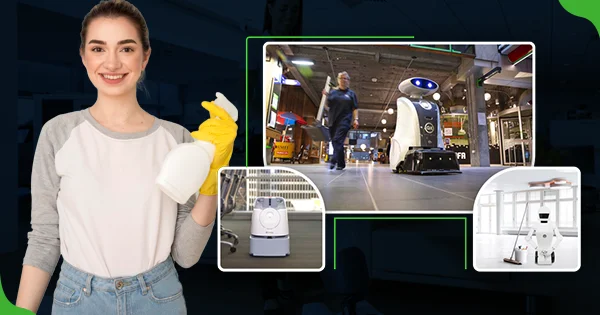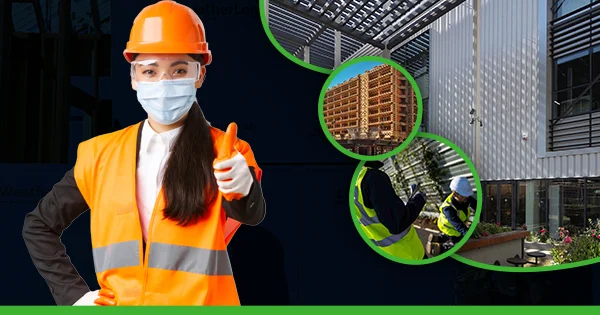Integrated Pest Management (IPM) is a holistic approach to pest control that focuses on prevention, monitoring, and control of pests in facilities. It involves the use of multiple strategies and techniques to manage pests effectively while minimising the use of chemical pesticides. IPM considers the specific needs and characteristics of each facility, as well as the potential risks associated with pest infestations. By adopting an IPM approach, facilities can maintain a pest-free environment and ensure the health and safety of occupants.
Understanding the Importance of Pest Control in Facilities
Pests in facilities can have a range of negative effects. They can damage property, contaminate food, and water sources, spread diseases, and cause allergic reactions in occupants. Pests such as rodents, cockroaches, and flies are known carriers of various pathogens that can pose serious health risks. In addition to the physical damage and health hazards they present, pests can also harm a facility’s reputation and lead to financial losses.
Maintaining a pest-free environment is crucial for the well-being of occupants and the overall success of a facility. A clean and pest-free facility creates a safe and healthy environment for employees, customers, and visitors. It also helps to protect the integrity of products and materials stored in the facility. By implementing effective pest control measures, facilities can prevent infestations before they occur, reducing the need for costly remediation efforts.
The Benefits of Adopting an IPM Approach
Adopting an IPM approach offers several benefits over traditional pest control methods. One of the main advantages is cost-effectiveness. IPM focuses on the prevention and early detection of pests, which can help to minimise the need for expensive treatments and repairs. By addressing pest issues proactively, facilities can save money in the long run.
Another benefit of IPM is its sustainability. Traditional pest control methods often rely heavily on chemical pesticides, which can have negative impacts on the environment and human health. IPM, on the other hand, emphasises the use of non-chemical methods and the least toxic pesticides when necessary. This reduces the overall environmental impact and promotes a more sustainable approach to pest control.
Basic Principles of IPM in Facilities
Four basic principles of IPM should be followed in facilities:
✔️ Prevention
The first principle of IPM is prevention. This involves identifying and eliminating conditions that are conducive to pest infestations. Facilities should implement measures such as sealing cracks and gaps, repairing plumbing leaks, and maintaining cleanliness to prevent pests from entering and thriving in the facility.
✔️ Monitoring
Regular monitoring is essential for early detection of pests. Facilities should establish a monitoring programme to identify signs of pest activity and determine the extent of infestations. This can be done through visual inspections, the use of traps and baits, and monitoring devices such as sensors and cameras.
✔️ Identification
Proper identification of pests is crucial for effective pest control. Facilities should be able to identify common pests found in their specific environment and understand their behaviour and characteristics. This knowledge will help in developing targeted control strategies.
✔️ Control
Once pests are detected, appropriate control measures should be implemented. IPM emphasises the use of non-chemical methods such as exclusion, sanitation, and mechanical controls whenever possible. Chemical pesticides should only be used as a last resort and by label instructions.
Identifying Common Pests in Facilities
Facilities can be susceptible to a variety of pests depending on their location, type of industry, and other factors. Some common pests found in facilities include rodents, cockroaches, flies, ants, termites, bed bugs, and stored product pests.
Rodents such as rats and mice are known for their ability to cause extensive damage to property and spread diseases through their droppings and urine. Cockroaches are another common pest that can contaminate food and surfaces with bacteria and allergens. Flies are carriers of various pathogens and can quickly multiply in unsanitary conditions. Ants can be a nuisance and contaminate food sources, while termites can cause structural damage to buildings. Bed bugs are notorious for their ability to infest bedding and furniture, causing discomfort and distress to occupants. Stored product pests, such as beetles and moths, can damage stored food products and raw materials.
Prevention Techniques for Pest Control in Facilities
Prevention is a key component of IPM in facilities. Here are some prevention techniques for common pests:
✔️ Rodents
Seal cracks and gaps in the building structure, install door sweeps, keep food and garbage properly stored, and maintain cleanliness to eliminate potential food sources.
✔️ Cockroaches
Keep the facility clean and free of food debris, fix plumbing leaks, seal cracks and crevices, and use cockroach baits and traps as needed.
✔️ Flies
Implement proper sanitation practices, keep garbage areas clean and well-sealed, install screens on windows and doors, and use fly traps or insect light traps.
✔️ Ants
Eliminate food sources by keeping the facility clean, sealing cracks and gaps, trimming vegetation away from the building, and using ant baits or barriers as necessary.
✔️ Termites
Conduct regular inspections for signs of termite activity, eliminate moisture sources, maintain proper ventilation, and consider using termite-resistant building materials.
✔️ Bed Bugs
Regularly inspect bedding and furniture for signs of bed bug activity, wash bedding at high temperatures, vacuum regularly, and consider using mattress encasements.
✔️ Stored Product Pests
Store food products in sealed containers, regularly inspect stored items for signs of infestation, maintain cleanliness in storage areas, and consider using pheromone traps or insecticides labelled for stored product pests.
Best Practices for IPM Implementation in Facilities
Implementing IPM in facilities requires a systematic and collaborative approach. Here are some best practices to consider:
✔️ Develop An IPM Policy
Establish a written IPM policy that outlines the facility’s commitment to pest control and prevention. This policy should include goals, responsibilities, and procedures for implementing IPM.
✔️ Conduct Regular Inspections
Regularly inspect the facility for signs of pest activity and potential entry points. This can help to identify and address pest issues before they become major problems.
✔️ Maintain Good Sanitation Practices
Keep the facility clean and free of food debris, garbage, and standing water. Regularly empty trash bins, clean spills promptly, and maintain proper drainage.
✔️ Educate Employees
Train employees on the importance of pest control and their role in preventing infestations. Provide information on common pests, their behaviour, and how to report signs of pest activity.
✔️ Communicate With Stakeholders
Establish open lines of communication with employees, tenants, and other stakeholders. Encourage them to report any signs of pests or conditions that may contribute to infestations.
✔️ Collaborate With Pest Control Professionals
Work with qualified pest control professionals who have experience in IPM. They can provide guidance on pest prevention strategies, conduct inspections, and recommend appropriate control measures.
Role of Pest Control Professionals in IPM
Pest control professionals play a crucial role in implementing IPM in facilities. They have the knowledge and expertise to identify pests, assess infestations, and develop effective control strategies. Pest control professionals can also guide preventive measures and help facilities comply with regulations and industry standards.
When hiring pest control professionals for IPM implementation, it is important to choose qualified individuals or companies. Look for professionals who are licensed, insured, and experienced in IPM practices. They should have a thorough understanding of local regulations and be able to provide references from satisfied clients.
Common Mistakes to Avoid in IPM in Facilities
While implementing IPM in facilities, some common mistakes should be avoided:
✔️ Ignoring Preventive Measures
Failing to address conditions that are conducive to pest infestations can undermine the effectiveness of IPM. Prevention should be a priority and should not be overlooked.
✔️ Over-Reliance on Chemical Pesticides
While chemical pesticides can be effective in controlling pests, they should not be the first line of defence. IPM emphasises the use of non-chemical methods whenever possible to minimise environmental impact.
✔️ Lack of Communication and Collaboration
Effective IPM requires collaboration between facility managers, employees, and pest control professionals. Lack of communication and coordination can lead to ineffective pest control measures.
✔️ Inadequate Monitoring
Regular monitoring is essential for early detection of pests. Facilities should establish a monitoring programme and ensure that it is consistently implemented.
✔️ Failure to Address Underlying Causes
Simply treating the symptoms of a pest infestation without addressing the underlying causes can lead to recurring problems. It is important to identify and eliminate conditions that attract pests.
Maintaining a Pest-Free Environment in Your Facility
Maintaining a pest-free environment is crucial for the health and safety of occupants, as well as the success of a facility. By adopting an IPM approach, facilities can effectively manage pests while minimising the use of chemical pesticides. IPM focuses on prevention, monitoring, and control, and emphasises the importance of collaboration and communication. Implementing IPM in facilities requires a systematic and proactive approach. This involves identifying common pests, implementing preventive measures, conducting regular inspections, and collaborating with qualified pest control professionals. By following these best practices and avoiding common mistakes, facilities can maintain a pest-free environment and ensure the well-being of occupants.










